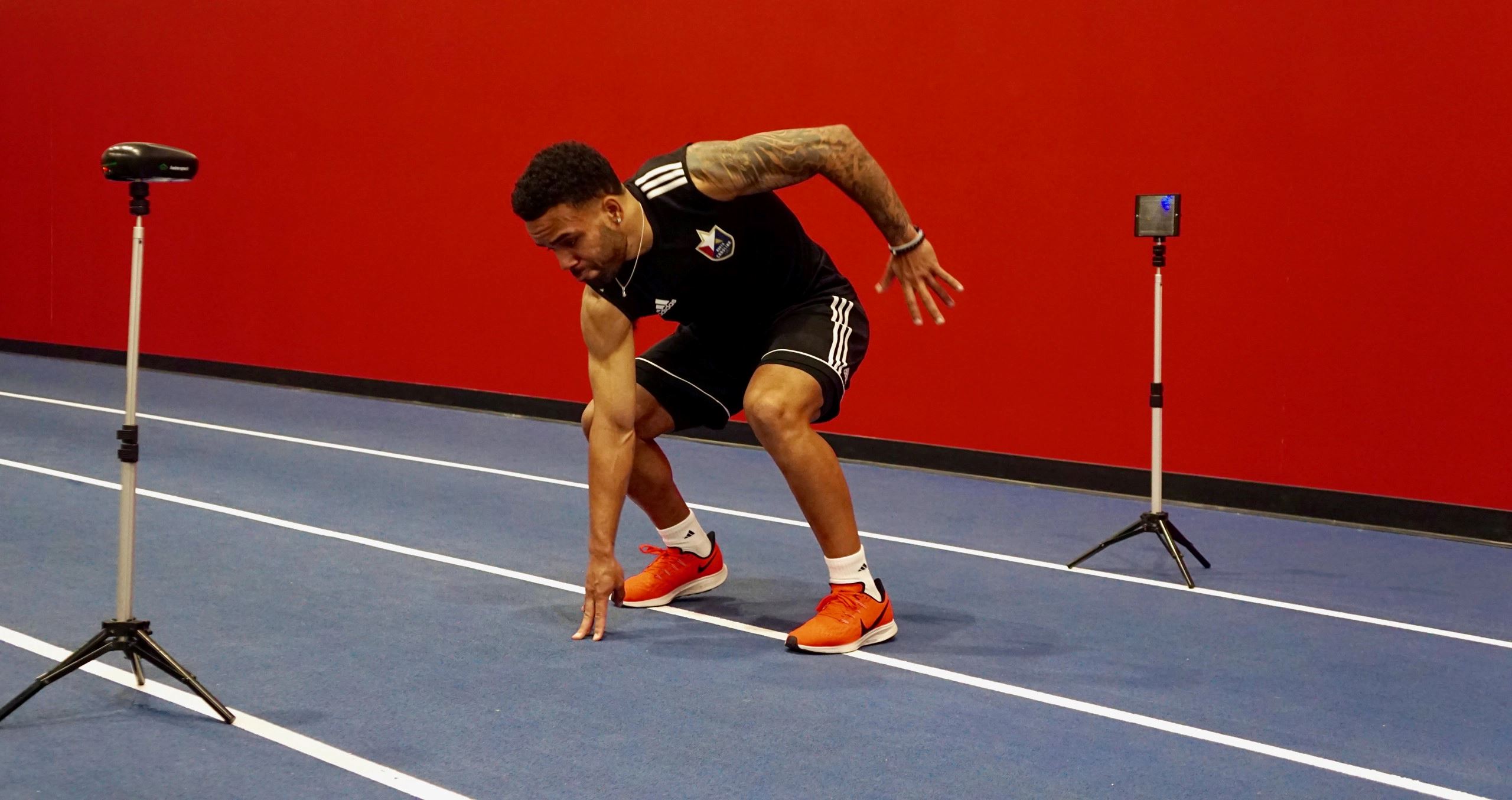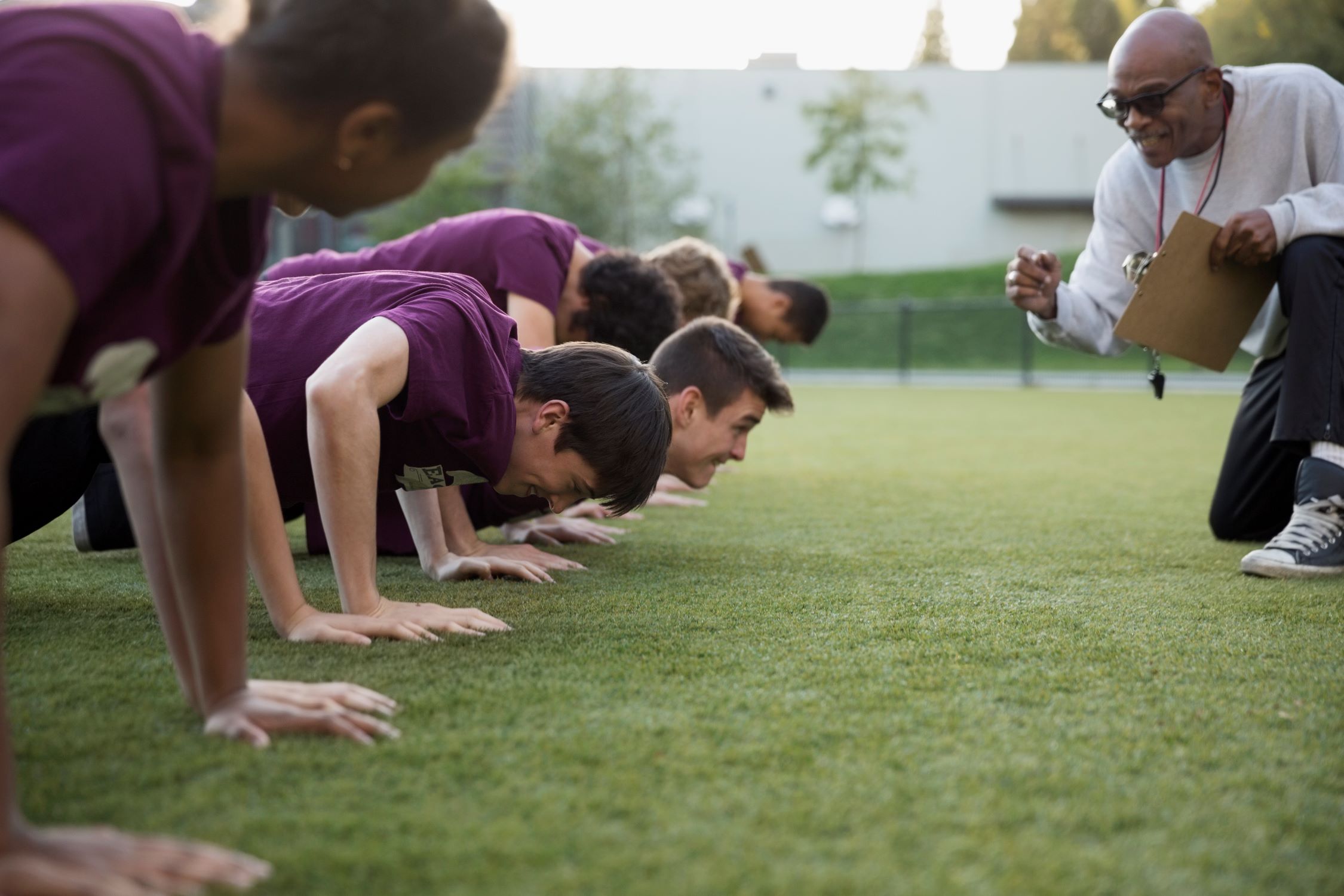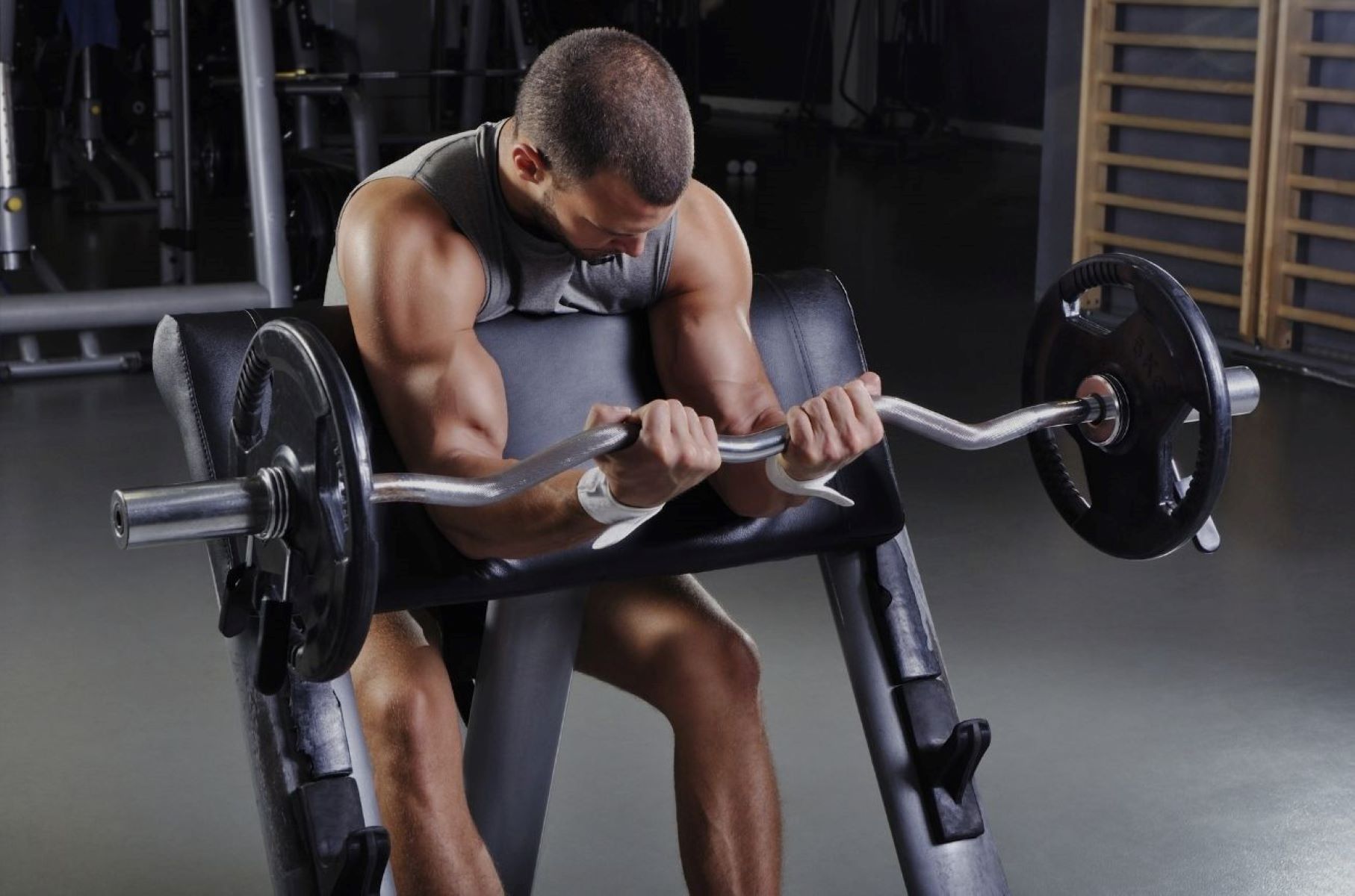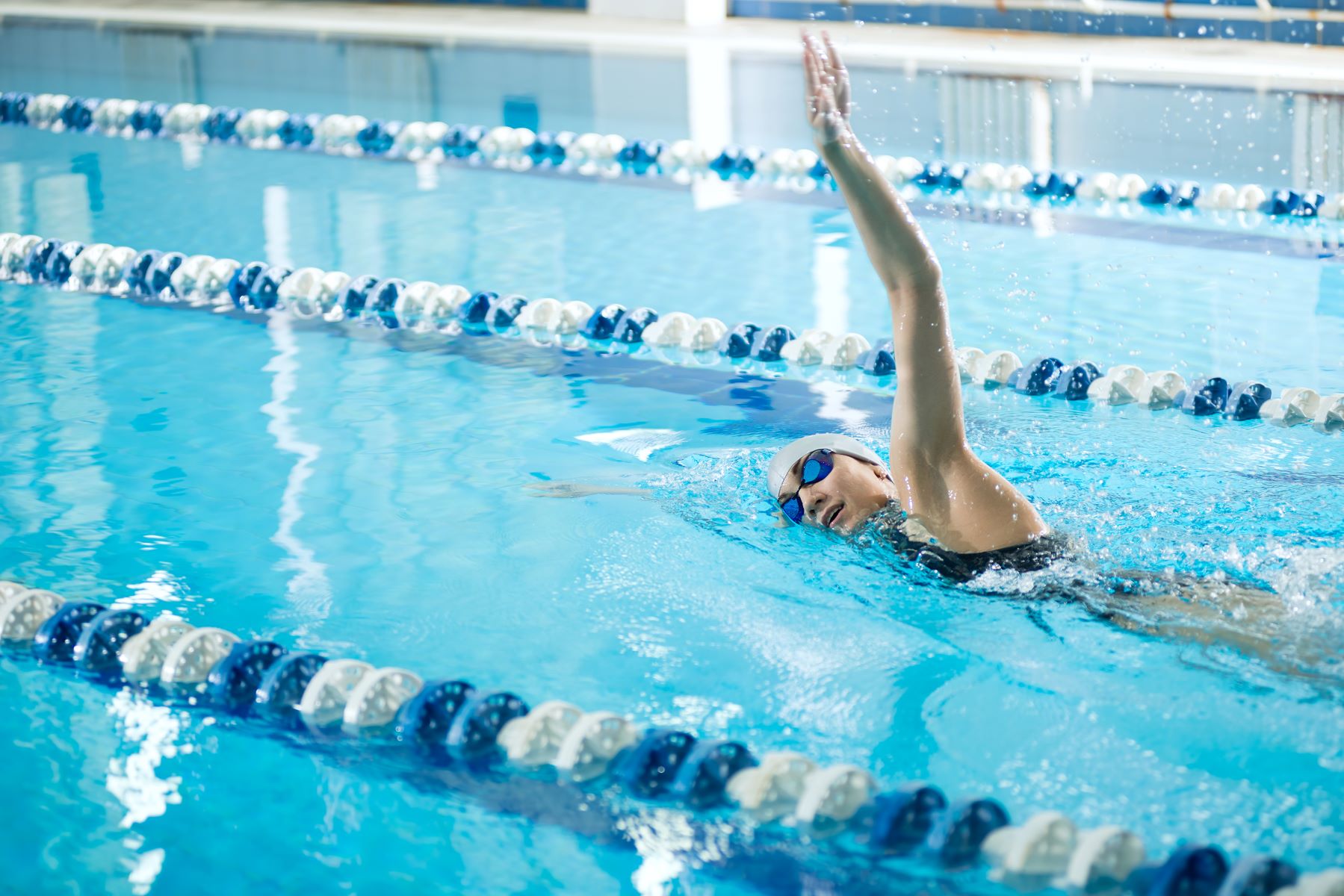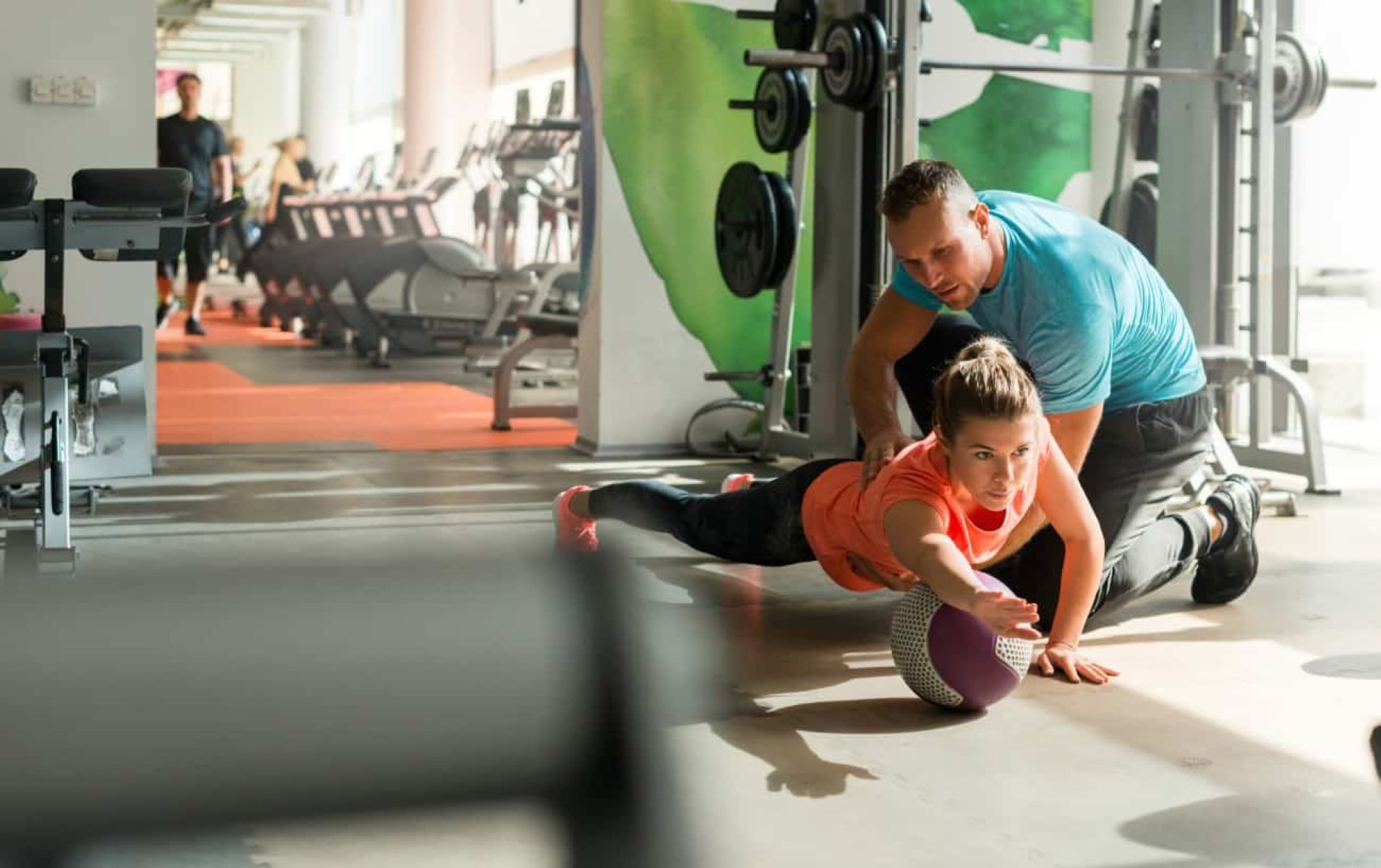

Featured
How To Test Muscular Endurance
Modified: January 22, 2024
Increase your muscular endurance with our featured guide on how to test your strength and stamina. Learn the best techniques to evaluate your body's performance and track your progress.
Introduction
Welcome to this comprehensive guide on how to test muscular endurance. Muscular endurance is an essential component of overall fitness and plays a crucial role in daily activities, sports performance, and injury prevention. By understanding and assessing your muscular endurance, you can tailor your exercise routine and training program to achieve optimal results.
Muscular endurance is defined as the ability of a muscle or a group of muscles to repeatedly exert force over an extended period. It is different from muscular strength, which focuses on the maximum force a muscle can generate in a single effort. Muscular endurance, on the other hand, measures how long a muscle can sustain an activity before fatigue sets in.
By testing your muscular endurance, you can gauge your current fitness level and track improvements over time. This is particularly important for athletes and fitness enthusiasts who want to monitor their progress and enhance their performance. Additionally, assessing muscular endurance can help identify muscle imbalances or weaknesses that may lead to injuries.
There are various tests available to measure muscular endurance, each targeting specific muscle groups and movement patterns. Some common tests include push-ups, planks, and squats. These tests challenge your muscles to repeatedly contract and sustain the movement, simulating the demands of real-life activities.
In this guide, we will explore different types of muscular endurance tests, including how to perform them correctly and how to interpret the results. We will also discuss the factors that influence muscular endurance and offer tips to improve it. Whether you are a professional athlete, a weekend warrior, or simply someone looking to improve their overall fitness, understanding and testing your muscular endurance is a valuable tool on your fitness journey.
Understanding Muscular Endurance
Muscular endurance is a fundamental component of fitness that refers to the ability of a muscle or group of muscles to sustain repeated contractions over a prolonged period. Unlike muscular strength, which measures the force a muscle can exert in a single maximal effort, muscular endurance focuses on the muscle’s ability to perform repetitive movements without fatigue.
There are two types of muscular endurance: local muscular endurance and general muscular endurance. Local muscular endurance refers to the ability of a specific muscle group to sustain contractions, such as the endurance of the biceps during bicep curls. General muscular endurance, on the other hand, involves the overall endurance and stamina of the entire body.
Muscular endurance plays a vital role in various daily activities and sports performance. It improves the efficiency of muscle fibers, allowing individuals to perform tasks for longer durations without experiencing exhaustion. For athletes, muscular endurance is particularly essential in sports that require continuous efforts, such as long-distance running, swimming, cycling, and team sports like soccer or basketball.
Testing muscular endurance can provide valuable insights into an individual’s fitness level and help identify areas that need improvement. It allows individuals to set appropriate training goals and track progress over time. Additionally, understanding muscular endurance can help prevent injuries by identifying muscle imbalances or weaknesses that may lead to overuse or strain injuries.
Several factors can influence an individual’s muscular endurance, including genetics, muscle fiber type, training history, and overall fitness level. People with a higher proportion of slow-twitch muscle fibers tend to have better muscular endurance as these fibers are more resistant to fatigue. However, with proper training and conditioning, individuals can improve their muscular endurance regardless of their genetic predisposition.
In the next sections, we will explore the benefits of testing muscular endurance, the factors that influence it, and how to prepare for muscular endurance tests. By gaining a deeper understanding of muscular endurance, you will be better equipped to improve your fitness level and optimize your training program.
Benefits of Testing Muscular Endurance
Testing muscular endurance offers several benefits that can positively impact your overall fitness journey. Whether you are an athlete, a fitness enthusiast, or someone just starting their fitness journey, here are some key benefits of incorporating muscular endurance testing into your routine:
- Assessment of fitness level: Testing your muscular endurance provides an accurate assessment of your current fitness level. It allows you to gauge how well your muscles can endure prolonged activity and identify any areas of weakness or muscle imbalances. This information is essential for designing a targeted and effective training program.
- Setting achievable goals: By knowing your baseline level of muscular endurance, you can set realistic and achievable goals. Testing allows you to track your progress over time and see improvements in your endurance levels. This can help you stay motivated and focused on your fitness journey.
- Tracking progress: Regularly testing your muscular endurance allows you to track your progress and measure the effectiveness of your training program. Seeing tangible improvements in your endurance levels can be incredibly rewarding and provide the motivation to keep pushing yourself further.
- Identifying strengths and weaknesses: Muscular endurance testing helps you identify specific muscle groups or movement patterns where you may have strengths or weaknesses. It allows you to address these imbalances and tailor your training to improve weaker areas, leading to a more well-rounded and balanced physique.
- Injury prevention: Testing your muscular endurance can help highlight areas of weakness or muscle imbalances that may contribute to the risk of injury. By identifying these issues, you can take proactive steps to address them and reduce the likelihood of experiencing overuse or strain injuries.
- Enhanced sports performance: Muscular endurance is often crucial in many sports, as it directly impacts the ability to sustain performance over time. Testing and improving muscular endurance can lead to enhanced sports performance, whether you’re an endurance athlete or participate in team sports that require prolonged efforts.
Overall, testing your muscular endurance offers valuable insights into your fitness level, helps you set achievable goals, tracks your progress, identifies imbalances, prevents injuries, and boosts sports performance. Incorporating regular muscular endurance testing into your fitness routine can help you optimize your training program and achieve your desired fitness outcomes.
Factors that Influence Muscular Endurance
Several factors play a role in determining an individual’s muscular endurance. Understanding these factors can help you optimize your training program and improve your endurance levels. Here are some key factors that influence muscular endurance:
- Genetics: Genetic factors can significantly impact an individual’s muscular endurance. Some people naturally have a higher proportion of slow-twitch muscle fibers, which are more resistant to fatigue and well-suited for endurance activities. However, even if you have a genetic predisposition for lower muscular endurance, you can still improve and enhance your endurance levels through proper training and conditioning.
- Muscle Fiber Type: There are two primary types of muscle fibers: slow-twitch (Type I) and fast-twitch (Type II). Slow-twitch muscle fibers are more fatigue-resistant and are best suited for endurance activities. Fast-twitch muscle fibers, on the other hand, are responsible for explosive movements and have less endurance capacity. The proportion of these muscle fiber types in your muscles can influence your muscular endurance.
- Training History: The amount and type of training you have done in the past can impact your muscular endurance. Regularly engaging in activities that challenge and improve muscular endurance, such as endurance running, swimming, or cycling, can enhance your endurance levels. On the other hand, a sedentary lifestyle or a lack of regular endurance-focused training can lead to lower muscular endurance.
- Overall Fitness Level: Your overall fitness level, including cardiovascular fitness and muscular strength, can impact your muscular endurance. Improved cardiovascular fitness allows for better oxygen delivery to your muscles during exercise, delaying fatigue. Additionally, having a solid foundation of muscular strength provides a solid base for muscular endurance training.
- Body Composition: Body composition, including the ratio of lean muscle mass to body fat, can influence muscular endurance. Having a higher percentage of lean muscle mass can contribute to improved muscular endurance. Excess body fat can increase the workload on muscles and reduce endurance capacity.
- Training Techniques: The specific training techniques you employ can impact your muscular endurance. Endurance-focused exercises, such as high-repetition sets, circuit training, and interval training, can improve your endurance levels. Additionally, incorporating progressive overload, varying intensity levels, and allowing adequate rest and recovery between training sessions can help enhance muscular endurance.
It is important to note that while these factors can influence muscular endurance, they are not fixed limitations. With dedication, consistent training, and proper conditioning, individuals can improve their muscular endurance regardless of their starting point. Identifying these factors allows you to tailor your training program to address any weaknesses and maximize your muscular endurance potential.
Preparing for Muscular Endurance Testing
Before conducting muscular endurance testing, it is important to properly prepare to ensure accurate results and minimize the risk of injury. Here are some key steps to take when preparing for muscular endurance testing:
- Evaluate your current fitness level: Assess your overall fitness level and determine if you have any pre-existing conditions or injuries that may affect your ability to perform the tests. It is advisable to consult with a healthcare professional or fitness expert if you have any concerns.
- Choose the appropriate tests: Select the muscular endurance tests that are relevant to your fitness goals and target the muscle groups you want to assess. Common tests include push-ups, planks, squats, and other exercises that require sustained contractions.
- Understand the proper technique: Familiarize yourself with the correct form and technique for each test. Improper form can lead to inaccurate results and may increase the risk of injury. Consider working with a qualified trainer or watching instructional videos to ensure proper execution.
- Warm-up: Prior to testing, engage in a thorough warm-up to increase blood flow to the muscles and prepare them for the upcoming challenges. Include dynamic stretches and light aerobic exercises to warm up the entire body.
- Perform practice sets: Before attempting the actual tests, it is beneficial to perform practice sets to get familiar with the movements and build confidence. Practice sets also allow you to identify any areas of weakness or areas where you need to improve your technique.
- Rest and recovery: Adequate rest and recovery are essential for optimal performance. Ensure that you have had sufficient rest and are well-hydrated before conducting the tests. Giving your muscles time to recover between testing sessions is also crucial to prevent fatigue and decrease the risk of injury.
- Create a testing schedule: Plan when and how often you will conduct the muscular endurance tests. It is recommended to have regular intervals between testing sessions to allow for proper training and progress tracking.
- Maintain consistency: Consistency is key when it comes to accurately assessing and improving muscular endurance. Stick to a regular training routine and avoid drastic changes in your exercise program leading up to the testing sessions.
- Record and track your results: Keep a record of your test results, including the number of repetitions or the duration of each test. Tracking your progress over time will allow you to monitor improvements and make necessary adjustments to your training program.
By following these preparation steps, you can ensure that you are physically and mentally ready for the muscular endurance testing. Proper preparation will provide accurate results and help you make informed decisions for optimizing your training program and improving your muscular endurance.
Types of Muscular Endurance Tests
There are various types of muscular endurance tests that target different muscle groups and movement patterns. These tests are designed to assess the ability of specific muscles or groups of muscles to sustain contractions over a prolonged period. Here are some common types of muscular endurance tests:
- Push-Up Test: The push-up test is a classic and widely used muscular endurance test that primarily targets the upper body, including the chest, shoulders, and triceps. It involves performing as many push-ups as possible with proper form until fatigue sets in. The number of completed repetitions is recorded as a measure of upper body muscular endurance.
- Plank Test: The plank test assesses core muscular endurance and stability. It involves assuming a plank position, with the forearms and toes supporting the body while maintaining a straight line from head to heels. The goal is to hold the position for as long as possible while maintaining proper form and without sagging or arching the back.
- Squat Test: The squat test measures lower body muscular endurance, particularly in the quadriceps, hamstrings, and glutes. It involves performing a designated number of squats with proper form and a full range of motion. The focus is on maintaining control and completing the required repetitions without fatigue.
- Burpee Test: The burpee test is a dynamic full-body exercise that challenges both cardiovascular endurance and muscular endurance. It involves starting in a standing position, performing a squat, placing your hands on the floor, kicking your feet back into a plank position, performing a push-up, jumping the feet back to a squat, and explosively jumping into the air with hands overhead. The goal is to complete as many repetitions as possible within a specific time frame.
- Step-Up Test: The step-up test primarily targets lower body muscular endurance, focusing on the quadriceps, hamstrings, and glutes. It involves stepping up onto a raised platform or step, alternating legs, while maintaining a steady pace. The goal is to complete as many repetitions as possible within a specific time period.
- Dips Test: The dips test primarily targets the muscles in the upper body, including the triceps, chest, and shoulders. It involves using parallel bars or a dip station to perform a controlled up and down movement, with the elbows bending to a 90-degree angle. The number of completed repetitions is recorded as a measure of upper body muscular endurance.
It is important to choose the muscular endurance tests that align with your fitness goals and target the specific muscle groups you want to assess. Ensure that you perform the tests with proper form and technique to obtain accurate results. Incorporating a variety of these tests into your training program can provide a comprehensive assessment of your muscular endurance and help you tailor your workouts to improve your overall endurance levels.
Performing the Push-Up Test
The push-up test is a common and effective way to assess upper body muscular endurance. It primarily targets the muscles of the chest, shoulders, and triceps. Performing the push-up test correctly ensures accurate results and provides insights into your upper body strength and endurance. Here’s a step-by-step guide on how to perform the push-up test:
- Position: Start by positioning yourself face down on the floor, with your hands slightly wider than shoulder-width apart. Extend your legs straight, resting on the balls of your feet.
- Form: Keep your body in a straight line from head to heels, engaging your core muscles to maintain stability. Your hands should be directly beneath your shoulders, and your fingers should be pointing forward or slightly outward.
- Downward Phase: Lower your body by bending your elbows, keeping them tucked close to your sides. Lower yourself until your chest is just above the floor or until your elbows reach a 90-degree angle.
- Upward Phase: Push through your hands and extend your elbows, straightening your arms to raise your body back up to the starting position. Keep your body in a straight line throughout the movement.
- Repetitions: Perform as many push-ups as you can with proper form, aiming to maintain a steady and controlled pace. The test concludes when you can no longer maintain proper form or complete another repetition.
It is important to pay attention to proper form during the push-up test to ensure accurate results and minimize the risk of injury. Here are a few tips to help you maintain proper form:
- Engage your core: Keep your core muscles engaged throughout the movement to maintain stability and prevent sagging or arching of the back.
- Keep your head neutral: Avoid tucking your chin or tilting your head up. Maintain a neutral position and look slightly ahead of you to keep your neck aligned with your spine.
- Breathe: Inhale as you lower your body and exhale as you push yourself back up. Focusing on your breath helps maintain rhythm and stability.
- Full range of motion: Aim to lower your chest to the floor or until your elbows reach a 90-degree angle. This ensures that you are utilizing the full range of motion and engaging the target muscles effectively.
- Modify as needed: If you are unable to perform a full push-up, you can modify the test by performing push-ups from your knees or using an inclined surface to reduce the level of difficulty. Remember to maintain proper form regardless of the modifications you use.
By performing the push-up test correctly and maintaining proper form, you can accurately assess your upper body muscular endurance. Tracking your results over time and incorporating push-ups into your training routine can help improve your upper body strength and endurance levels. Remember to focus on gradual progression and consistently challenge yourself to achieve your fitness goals.
Performing the Plank Test
The plank test is a popular assessment of core muscular endurance and stability. It targets the muscles of the core, including the abdominals, lower back, and obliques. Performing the plank test correctly ensures accurate results and provides insights into the endurance and strength of your core muscles. Follow these steps to perform the plank test:
- Position: Start by positioning yourself face down on the floor. Place your forearms on the ground, aligning your elbows directly beneath your shoulders. Extend your legs straight, resting on the balls of your feet.
- Form: Keep your body in a straight line from head to heels, engaging your core muscles to maintain stability. Avoid sagging or arching your back; your hips should be parallel to the floor.
- Hold Position: Maintain the plank position for as long as you can, focusing on maintaining proper form and stability. Keep your breathing steady and relax your shoulders and neck.
- Recording: Note the duration of time you were able to hold the plank position, as this will be used to assess your core muscular endurance.
To get the most out of the plank test and ensure accurate results, consider the following tips:
- Engage the core: Throughout the test, focus on contracting and engaging your core muscles. This helps maintain stability and ensures that your core muscles are being effectively challenged.
- Maintain proper alignment: Avoid sagging or arching of the back. Keep your body in a straight line from head to heels. Imagine your body as a plank, maintaining a rigid and straight structure throughout the test.
- Breathe: Inhale deeply and exhale slowly, focusing on maintaining a steady breathing pattern. This helps you stay relaxed and prevents unnecessary tension in your muscles.
- Start with shorter durations: If you are new to planking or have limited core strength, start with shorter durations and gradually increase the time as your endurance improves. It’s important to challenge yourself without sacrificing proper form.
- Modify as needed: If the full plank is too challenging, you can modify the test by performing the plank on your knees or using an inclined surface, such as a bench or step. As with any modification, maintain proper form and work towards progressing to the full plank over time.
Incorporating the plank test into your fitness routine allows you to assess and track your core muscular endurance. By consistently practicing the plank and gradually increasing your hold time, you can strengthen your core muscles, improve stability, and enhance overall functional fitness. Remember to listen to your body, progress at your own pace, and maintain proper form throughout the plank test.
Performing the Squat Test
The squat test is a widely used method to assess lower body muscular endurance. It primarily targets the quadriceps, hamstrings, and glutes, making it an excellent test for evaluating lower body strength and endurance. Performing the squat test correctly ensures accurate results and provides insights into your lower body muscular endurance. Follow these steps to perform the squat test:
- Position: Stand with your feet shoulder-width apart, toes pointing forward, and maintain a straight back posture.
- Form: Initiate the squat by bending your knees and flexing at the hips, as if you are about to sit back into a chair. Keep your chest up, back straight, and gaze forward. Continue descending until your thighs are parallel to the ground.
- Range of Motion: Ensure you are achieving a full range of motion by reaching parallel or slightly below parallel with your thighs. It’s important to maintain proper form throughout the movement.
- Repetitions: Perform as many squats as you can with proper form, aiming for a steady and controlled pace. The test concludes when you can no longer maintain proper form or complete another repetition.
Here are some tips to help you maintain proper form and get the most out of the squat test:
- Keep your knees tracking over your toes: During the movement, ensure that your knees are in line with your feet and do not cave inwards. This helps maintain joint stability and minimizes the risk of injury.
- Engage your core muscles: Activate your core muscles to support your spine and maintain stability throughout the squat. This also improves overall body control and stability.
- Control your descent and ascent: Maintain control as you lower yourself into the squat and as you rise back up. Avoid sudden movements or bouncing at the bottom of the squat.
- Breathe: Inhale deeply as you lower yourself into the squat, and exhale as you push back up to the starting position. Focus on maintaining a consistent breathing pattern throughout the test.
- Utilize proper foot placement: Ensure that your feet are positioned at shoulder-width apart or slightly wider, with your toes pointing slightly outward. This allows for proper alignment and distribution of weight during the squat.
- Modify as needed: If you are unable to perform a full squat, you can modify the test by squatting to a higher surface, like a chair or bench, to decrease the depth. As you gain strength and confidence, progress towards performing full squats.
Regularly incorporating the squat test into your fitness routine allows you to assess and track your lower body muscular endurance. By focusing on maintaining proper form and gradually increasing the number of repetitions, you can improve lower body strength, endurance, and overall functional fitness. Remember to listen to your body, progress at your own pace, and prioritize good form during the squat test.
Interpreting the Test Results
Interpreting the results of muscular endurance tests is crucial for understanding your current fitness level and identifying areas for improvement. Here are some key factors to consider when interpreting your test results:
- Number of Repetitions or Duration: The primary measure in most muscular endurance tests is the number of repetitions completed or the duration of time you were able to hold a specific position. Compare your results to established norms or previous test results to determine if there have been improvements or areas that need further attention.
- Comparison to Norms: Many studies have established norms and average scores for different age groups and fitness levels. By comparing your test results to these norms, you can gain a better understanding of your relative muscular endurance level. It is important to consider that individual variations exist, and the norms should only serve as a general guideline.
- Progression Over Time: Track your progress by comparing your current results to previous test results. You can evaluate improvements or declines in your muscular endurance levels. Consistency in training and gradually increasing the difficulty of exercises are key factors for improved results over time.
- Relative Strengths and Weaknesses: Pay attention to the specific muscle groups targeted by each test. If you excel in certain tests while struggling in others, it can indicate relative strengths and weaknesses in your muscular endurance. Adjust your training program to address these imbalances and ensure a well-rounded development.
- Consideration of External Factors: Keep in mind that external factors can influence your test results. Factors such as fatigue, illness, stress, or lack of proper rest and recovery can affect performance. If you notice unexpected discrepancies or unusually high levels of fatigue, reassess the test on a different day to ensure accurate results.
Interpreting your test results in combination with your overall fitness goals and other assessments, such as strength testing or cardiovascular endurance, provides a comprehensive picture of your physical fitness. It enables you to make informed decisions about your training program, set realistic goals, and track your progress over time.
Remember that muscular endurance is a trainable attribute, and consistent and targeted training can lead to improvements in your muscular endurance levels. Use your test results as a starting point and motivation to develop a well-rounded program that includes exercises and training methods specifically aimed at improving your muscular endurance.
Tips for Improving Muscular Endurance
If you want to improve your muscular endurance, there are various strategies and training techniques that you can incorporate into your fitness routine. Here are some effective tips to enhance your muscular endurance:
- Incorporate high-repetition sets: Perform exercises or workouts with higher repetitions to challenge your muscles and improve endurance. Aim for sets of 12 or more repetitions with a lighter load, focusing on maintaining proper form throughout.
- Utilize circuit training: Circuit training involves performing multiple exercises back-to-back, targeting different muscle groups. This method keeps your heart rate elevated and effectively builds muscular endurance. Design a circuit with exercises that challenge your muscles and include both strength and cardio exercises.
- Include interval training: Intervals involve alternating between periods of higher intensity exercise and active recovery. Incorporate intervals into your routine by combining cardio exercises, such as running or cycling, with bodyweight exercises like squats or push-ups.
- Implement progressive overload: Gradually increase the intensity, duration, or difficulty of your workouts to continually challenge your muscles. This progressive overload helps stimulate adaptation and improves your muscular endurance over time.
- Focus on compound exercises: Compound exercises, such as squats, deadlifts, lunges, and push-ups, target multiple muscle groups simultaneously. These exercises enhance overall muscular endurance and functional strength.
- Emphasize proper form: Maintaining proper form during exercises is essential for optimal muscle engagement and injury prevention. Focus on executing each movement with proper technique, even if it means reducing the load or intensity. Quality of movement is more important than quantity.
- Incorporate active recovery: Allow your muscles time to recover between sets and workouts. Engage in activities such as light stretching, walking, or foam rolling to promote blood flow and facilitate recovery.
- Rest and sleep: Adequate rest and quality sleep are crucial for optimal muscle recovery and growth. Aim for 7-9 hours of sleep per night, and listen to your body’s signals for rest days or lighter workout sessions.
- Maintain a balanced diet: Fueling your body with a balanced diet that includes lean proteins, complex carbohydrates, and healthy fats provides the necessary nutrients for muscle repair and growth. Stay hydrated and consume sufficient calories to support your energy needs.
- Stay consistent: Consistency is key to improving muscular endurance. Gradually increase the frequency and intensity of your workouts, and adhere to a regular training schedule. Consistency will yield better results than sporadic or irregular sessions.
Remember that improving muscular endurance takes time and effort. Be patient with your progress and focus on gradual improvements rather than looking for immediate results. By incorporating these tips into your training regime and staying committed to your fitness goals, you will see improvements in your muscular endurance and overall fitness level.
Conclusion
Testing and improving muscular endurance is essential for maintaining a well-rounded fitness level and achieving optimal performance. By understanding the principles of muscular endurance and utilizing effective testing methods, you can gain valuable insights into your fitness level, track progress, and identify areas for improvement. From push-up tests to plank tests and squat tests, each assessment provides a unique perspective on your muscle endurance capabilities.
By incorporating proper form, consistency, and progressive training techniques, you can enhance your muscular endurance over time. Training with high-repetition sets, circuit training, and interval workouts can challenge your muscles and enhance endurance. Additionally, focusing on compound exercises, maintaining proper form, and prioritizing rest and recovery are all key factors in improving muscular endurance.
It’s important to remember that everyone’s fitness journey is unique and progress may vary from person to person. Therefore, it’s crucial to listen to your body, respect its limits, and gradually progress in your training routine. By setting realistic goals, tracking your progress, and utilizing the tips provided in this guide, you can enhance your muscular endurance and optimize your overall fitness.
Keep in mind that improving muscular endurance is a continuous process that requires patience, dedication, and consistency. Take the time to evaluate your current fitness level, perform regular tests, and adjust your training program accordingly. Remember to consult with a healthcare professional or fitness expert if you have any concerns or pre-existing conditions.
By understanding and improving your muscular endurance, you’ll be better equipped to face the physical challenges of daily life, excel in sports and activities, and reduce the risk of injury. Make the commitment to prioritize your muscular endurance, and you’ll empower yourself with a foundation of strength, endurance, and overall fitness, enabling you to reach new levels of success in your fitness journey.


